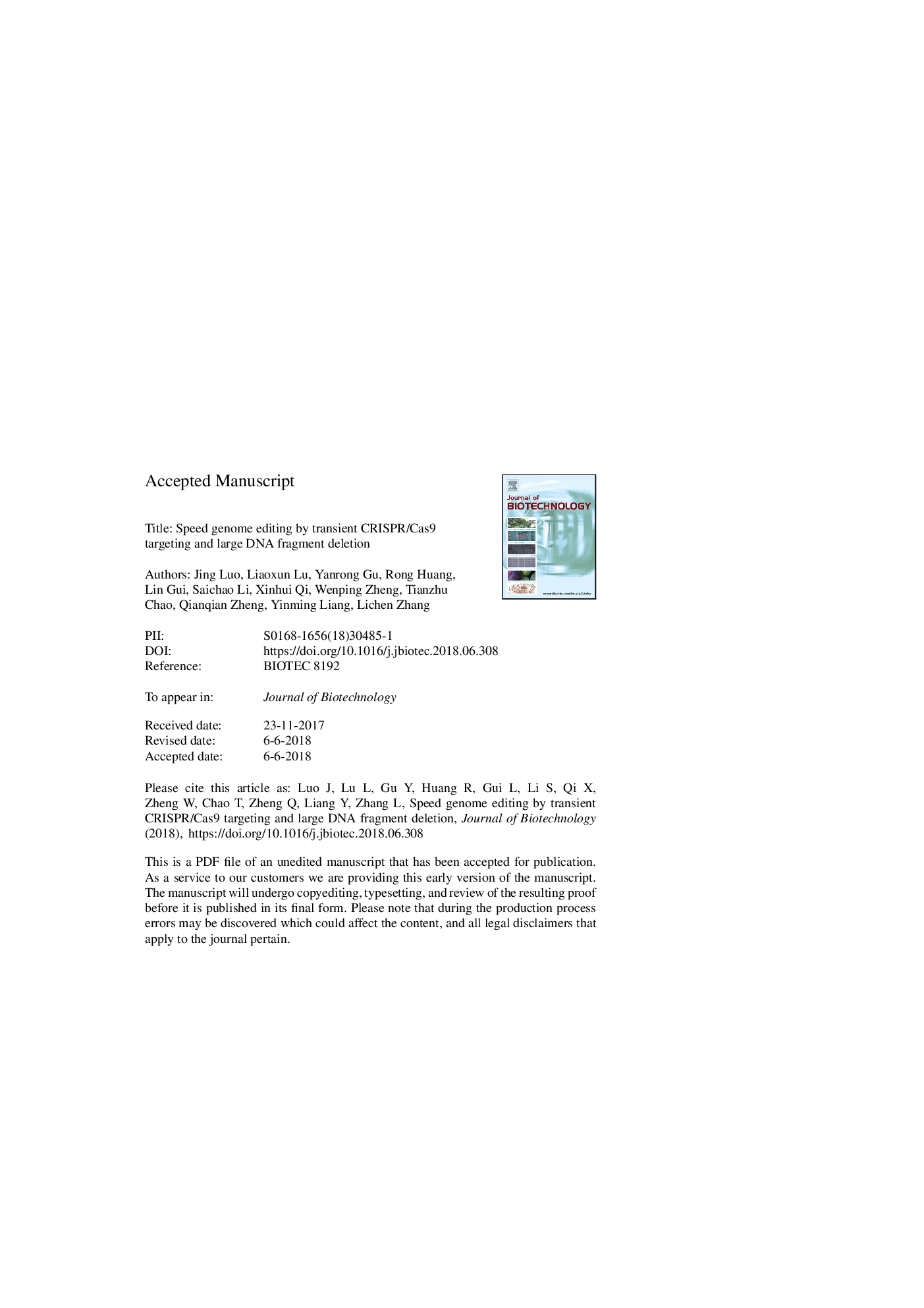| Article ID | Journal | Published Year | Pages | File Type |
|---|---|---|---|---|
| 6490148 | Journal of Biotechnology | 2018 | 28 Pages |
Abstract
Genetic engineering of cell lines and model organisms has been facilitated enormously by the CRISPR/Cas9 system. However, in cell lines it remains labor intensive and time consuming to obtain desirable mutant clones due to the difficulties in isolating the mutated clones and sophisticated genotyping. In this study, we have validated fluorescent protein reporter aided cell sorting which enables the isolation of maximal diversity in mutant cells. We further applied two spectrally distinct fluorescent proteins DsRed2 and ECFP as reporters for independent CRISPR/Cas9 mediated targeting, which allows for one-cell-one-well sorting of the mutant cells. Because of ultra-high efficiency of the CRISPR/Cas9 system with dual reporters and large DNA fragment deletion resulting from independent loci cleavage, monoclonal mutant cells could be easily identified by conventional PCR. In the speed genome editing method presented here, sophisticated genotyping methods are not necessary to identify loss of function mutations after CRISPR/Cas9 genome editing, and desirable loss of function mutant clones could be obtained in less than one month following transfection.
Keywords
Related Topics
Physical Sciences and Engineering
Chemical Engineering
Bioengineering
Authors
Jing Luo, Liaoxun Lu, Yanrong Gu, Rong Huang, Lin Gui, Saichao Li, Xinhui Qi, Wenping Zheng, Tianzhu Chao, Qianqian Zheng, Yinming Liang, Lichen Zhang,
